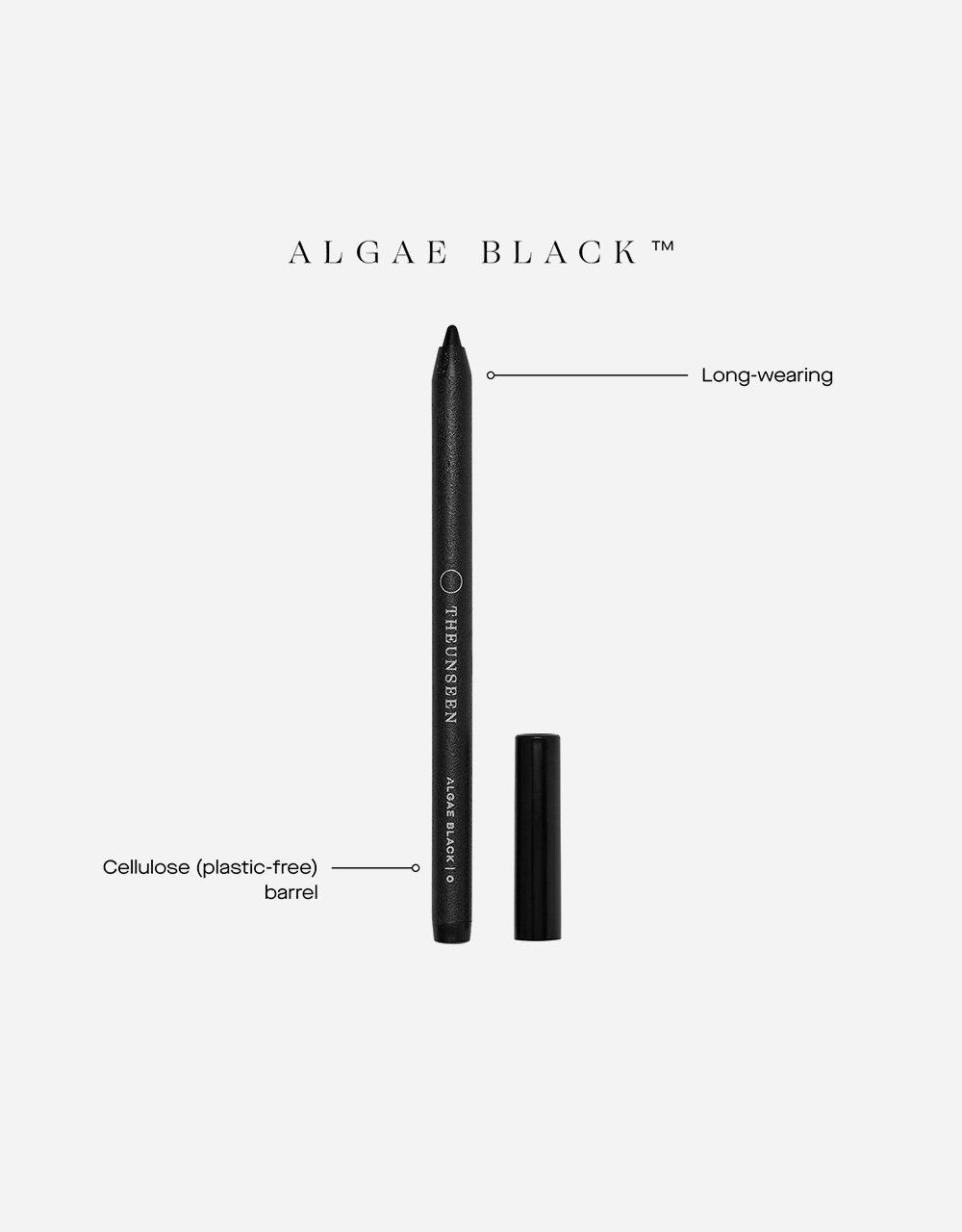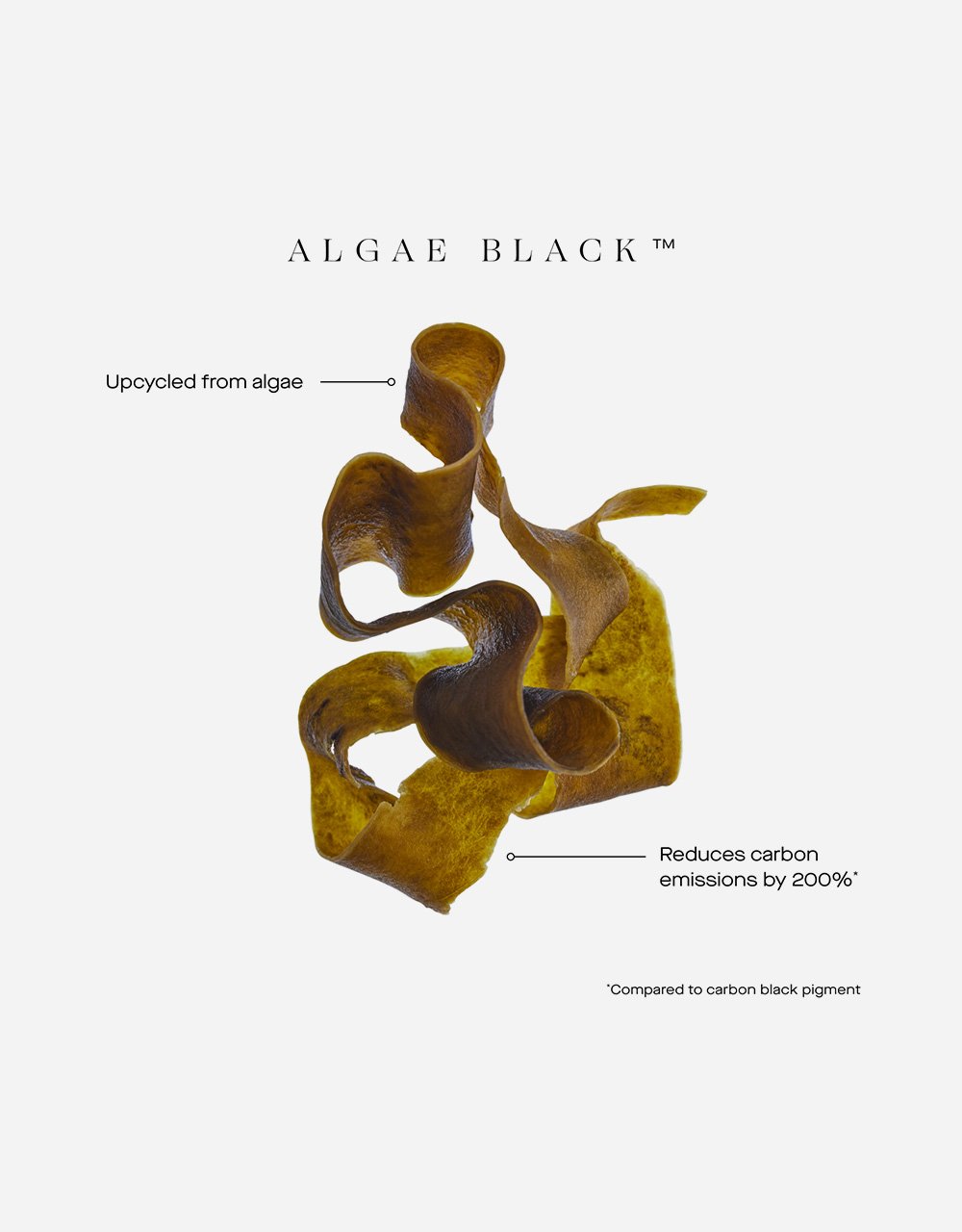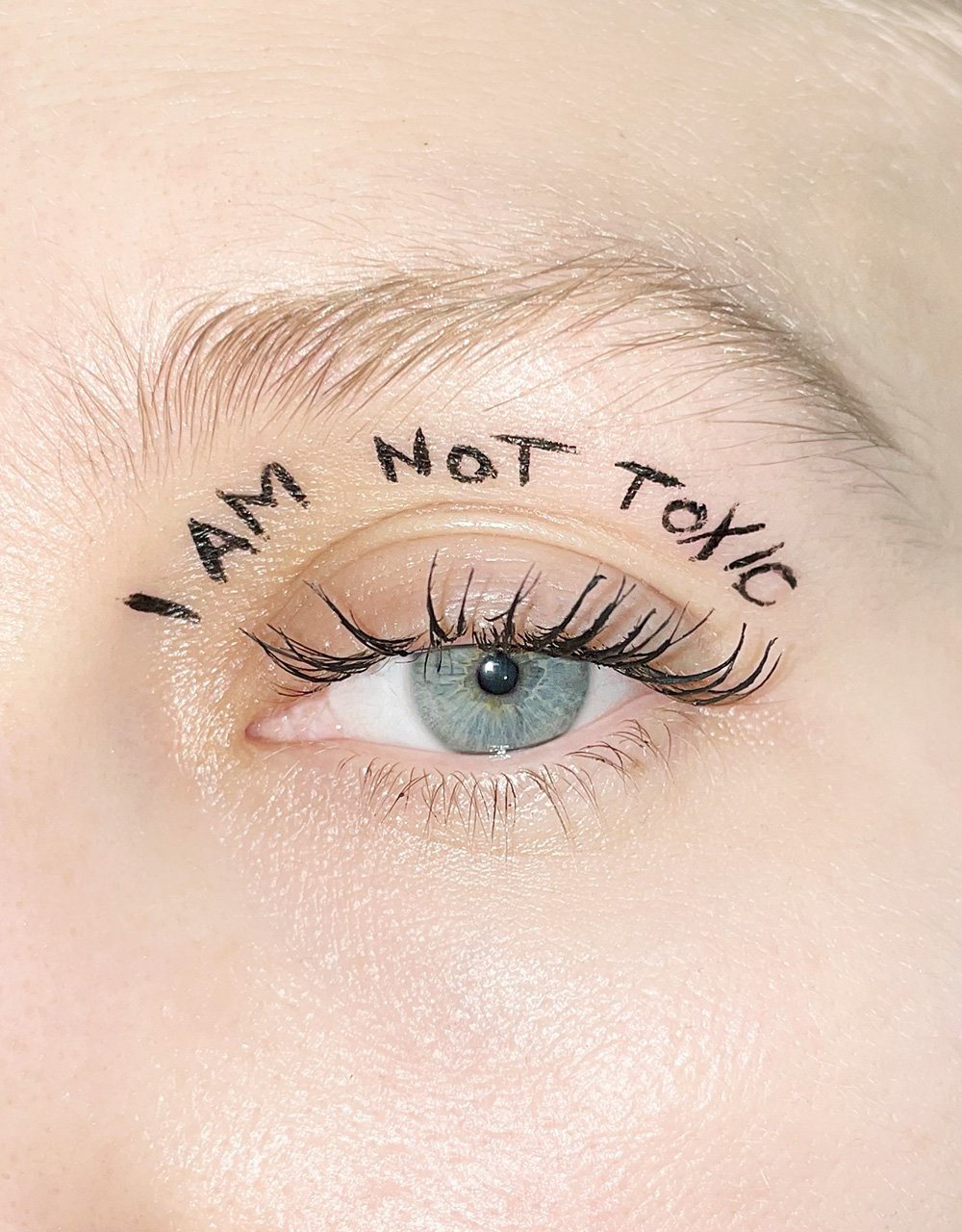The Unseen is revolutionizing the beauty industry using upcycled algae biomass
We speak to material scientist Lauren Bowker about why we need to be able to visualize the world that’s all around us, what alchemy means to her and her new pigment Algae Black.
At Parley, we’re always thinking about the future. What can the world look like? How can it be improved? How can we not just live in harmony with nature, but learn from it? We are aware that we cannot simply recycle our way out of the plastic crisis – we need to redesign the structures and systems that pollute our planet, along with the harmful materials that we’ve become addicted to. It’s why we’re calling for a Material Revolution – we have to change the way we make things in order to create the future. This new Parley series will meet the innovators and scientists who are trying to remodel our material world.
Lauren Bowker hasn’t followed a traditional route into science, or business, or anything that she does. Growing up in the hills of Lancashire, Northwest England, her curiosity for the hidden foundations of everyday human life led her to explore and experiment with the boundaries of materials in order to be able to see the invisible powers that dictate the way we live.
Bowker studied Printed Textiles at Manchester Met, during which time she fell severely ill. The impact on her health offered her a newfound clarity – she no longer wanted to make clothes for the catwalk, as had been her intention. She wanted to create things with more meaning. Bowker changed her course and studied Chemistry instead, where she began to investigate how materials could “speak for you.” She developed a pollution-sensing compound that changed color in accordance with the levels of contamination in the atmosphere; a simple, visual approach to seeing the world that you’re standing in and the impact that we as a species have on it. Data is meaningless unless you understand it, unless you see it.
In 2014 she launched The UNSEEN, a disruptive laboratory and design studio with a base in East London, and created an array of products that captured the world’s imagination, racking up millions of views on the promo videos. FIRE is a hair dye that switches color as the temperature changes and she created a headpiece for Swarovski with gemstones that change color in response to brain activity. In 2021, The UNSEEN launched its direct-to-consumer beauty brand along with an eye cream called Spectra that transforms into a bright silver when exposed to camera flash. In just over two years, The UNSEEN has cultivated a young community of beauty enthusiasts, inspired not just by the products but by the approach. Bowker wants to change the industry from within and get rid of the old formulas, systems and processes that have propped it up for decades. This desire for change is seen in the form of her latest product ABSORPTION – a mascara and eyeliner that showcases Algae Black™, the world's first non-toxic black pigment in beauty, made from upcycled algae biomass.
For the latest in our Material Revolution series, we headed to The UNSEEN’s studio to shoot a film (that you can watch on our social channels), see how you can make beauty products from algae and learn about her journey to being a material scientist.
Lauren Bowker
Q&A
Why did you launch The UNSEEN and was it in response to a problem you saw within the industry?
I never intended to start a business, it just sort of happened! I've always been interested in the unseen things that surround humans but are invisible to our human senses, such as pollution, energy, consciousness, other planets, cells and blueprints. As a kid, I always liked to explore and dream (I love sleeping). I also love problem-solving; I get a sense of reward from it. That curiosity led me down paths where I started to use design and materials to see these unseen things (for me personally, that was seeing my pain as I have a spinal disability. I wanted materials around me to do more and they didn't exist, so I needed to create them myself. This need led me to science and, very early in life, led me to develop a pollution-sensing compound that changed from yellow to black in real-time to show the effects of pollution. I was only 20 when I did that and as a young woman – at that time, it was a disruptive way of doing "science.”
How do you hope to revolutionize the beauty industry and what specifically do you think needs to change?
Beauty came recently. I always work with an end material as a surface for my color formulas to sit on. Materials are so vast that they are everywhere and the skin and the hair are just another textile. It's also the first barrier between the conscious body and the physical body. The skin is the biggest organ we have and it is alive. Yet the formulas we put onto our skin are not alive. They are static, and they mask that beauty. But what if they could be alive? What if they could be a second skin? What would beauty look like then? That's what initially piqued my curiosity.
Once I started looking under the hood of color cosmetics formulation, I noticed how awfully toxic color formulas are. I was shocked! For example – glitter, plastic, mica – finite resources that are often mined with child labor. Carbon black is quite literally made from crude oil or coal. Red lipstick? Carmine beetles! Still! In 2024, why has this not changed? I had the skills from the last fifteen years of replacing all that in textiles, so it felt like an obligation to fix the problems with materials science. It means challenging the big guys who dominate beauty and working with them to create change, but I like a challenge and having our brand to set the example of how things should be helps lead the way. Everyone said we couldn't move into beauty when we first started thinking about it. They said it would be too hard, impossible, you don't know what you're doing, and you don't have the skills or if it was wanted the big guys would have already done it, but that's not the case for many political and logistical reasons. It just needed someone to take that risk and work hard to find the right people, processes and solutions! So here we are as a team, spotting the gaps, creating new gaps and solving them.
How long have you been working on Algae Black, was it difficult to design and how excited are you about the impact it could have on the beauty industry?
We began our work on bringing Algae Black into beauty around five years ago. Firstly, we wanted to understand if the raw material was compatible with a beauty formula – it wasn't! So, there was a lot of work to optimize the material and formula. We worked in partnership with an incredible biomaterials company, Living Ink, who created the raw Algae Black pigment; they have a great track of getting this pigment into fashion and a goal to replace carbon black production entirely. Together, we began a journey of getting Alage Black ready for the beauty industry.
Not only does Algae Black provide a climate-positive pigment alternative that reduces the need for polluting carbon black production (which releases between 2-4 liters of planet-warming carbon dioxide for every liter produced), but every liter of algae removes 4 liters of carbon dioxide from the atmosphere. With global carbon black production projected to significantly increase from the current annual 8.1 million metric tonnes to 23 million metric tonnes by 2033, adopting Algae Black presents a critical step towards mitigating environmental impact and addressing the urgent need for sustainable alternatives in the beauty industry.
ABSORPTION represents a pivotal shift in cosmetic color production while underpinning THE UNSEEN's mission to pioneer new color experiences and new conscious color choices by inventing world-firsts in color cosmetics. With this world-first climate-positive black beauty pigment, we hope to lead the charge in long-overdue ethical color cosmetics innovation and set a new standard for sustainability to revolutionize beauty while safeguarding the planet's future.
You describe yourself as a material alchemist - can you explain that a little further and how that approach works its way into the work The UNSEEN does?
I didn't coin that term originally! I've never fitted in with labels and boxes, coming from arts into science and back again. My way of doing science is, let's say, unorthodox. My style of working is to collaborate with other people and to bring more of a designed way to formulating ideas – very hands-on and intuitive at first, though my team is very methodological, I need them. During my Master's in Printed Textiles at the Royal College of Art, my desk was piled high with formulas and drawings and weird samples of material stuck to the wall and one day, my tutor Anne Toomey said, "You're a bloody alchemist,” and it stuck. Alchemy, to me, is the combining of things to create something that didn't exist before. It could be combining skills or minds or mixing ingredients. It's also the early definition of chemistry. If you look at the actual definition of science too, it just means studying the world we live in. I have one foot in design and one foot in science with the added philosophical imposter syndrome of constantly questioning myself about why I'm doing something. To me, that is the definition of an alchemist.
“Once I started looking under the hood of color cosmetics formulation, I noticed how awfully toxic color formulas are.”
Lauren Bowker — Founder, The UNSEEN
Living Ink uses byproduct algae material grown at Earthrise Nutritionals in California.
Creating a black pigment from algae at The UNSEEN.
What are the major challenges that you find trying to introduce new materials or ways of working into mainstream markets?
There's loads – every day there's a challenge! The formula itself is always challenging, using new materials means starting from scratch. Often, they prefer to avoid playing with other ingredients, so the first hurdle is solving the formula! The second is regulation. The industry is set up in a way for the big guys to succeed – they made the rules, they got together to create a pact of what is allowed to formulate with color cosmetics and what isn't, but this Annex (Annex IV) was written in the 60s. Science has moved on since then but the pact is the same, so we are constantly working with governmental and regulation bodies to get this pact updated. It’s a huge task and it's going to take a lot of time to get things changed. I expect it will be a forever evolving problem.
Finally, as a small start-up, the cost of purchasing beauty components, packaging, etc…is insane. If you want to do something disruptive there and create packaging that isn't currently in the market, it adds even more cost and complexity. The minimum order quantities are so large they prohibit small-scale businesses, but we believe in getting it right; we can't change everything on day one, so we do what we can. Often, we have the formulas years before we can finance the production! This is where investment comes in handy!
"We reveal to the world what it cannot see for itself" - tell me more about that mission statement and how you do it.
In essence, we just reveal unseen stuff to the world, problems that exist or new colors and ideas. Hopefully, all of our products inspire people who see them to see the world or themselves in a new way somehow. Every product we make starts with a question. We want to invent something other than the same old thing, we want to invent something to solve something. Like with Spectra, the world lives both digitally and physically, so why not have a color that can exist differently in dual reality worlds? And with the Algae Black we asked why Carbon Black needed to be used at all! That one was a no-brainer though it's been the hardest to get through regulation! You can eat it as a spirulina, but until now you couldn't wear it. The regulation said so…well, until we sorted that out! Which took years!
How does sustainability figure in your day to day work and how do you implement it in your practice or when you're creating new products?
We invent new colors daily and we start from scratch. So why would we not create sustainably? For us, it's a necessity, not a goal. I have this vision of leaving only an experience on the planet. Imagine an eyeshadow palette where you can wear a look to be who you want to be and then compost it all with absolutely zero impact on the planet. That is nearly impossible in today's beautiful world, but tomorrow it's possible and you have to start small. First, fix the formula, then the packaging, components, supply chain, and end-of-life scenario. The hardest part is changing the system. But baby steps!
How did you get so obsessed with material science?
I think I'm obsessed with seeing something I've never seen before, and material science is the fundamentals of how something is held together and what it's made of. When you want to invent new things, you need to know what they are made of first!
If you could invent one thing, what would it be?
Tough one! Philosophically, I'd love to invent a world where everyone feels like they belong somehow. I was joking earlier about creating a cure for the male ego – that could fix a lot of things. I'd love to invent a way to read emotions, particularly see and understand pain, to be able to help myself and others, but I guess I just need to do more therapy!
“Fix the formula, then the packaging, components, supply chain, and end-of-life scenario. The hardest part is changing the system.”
Lauren Bowker — Founder, The UNSEEN

































